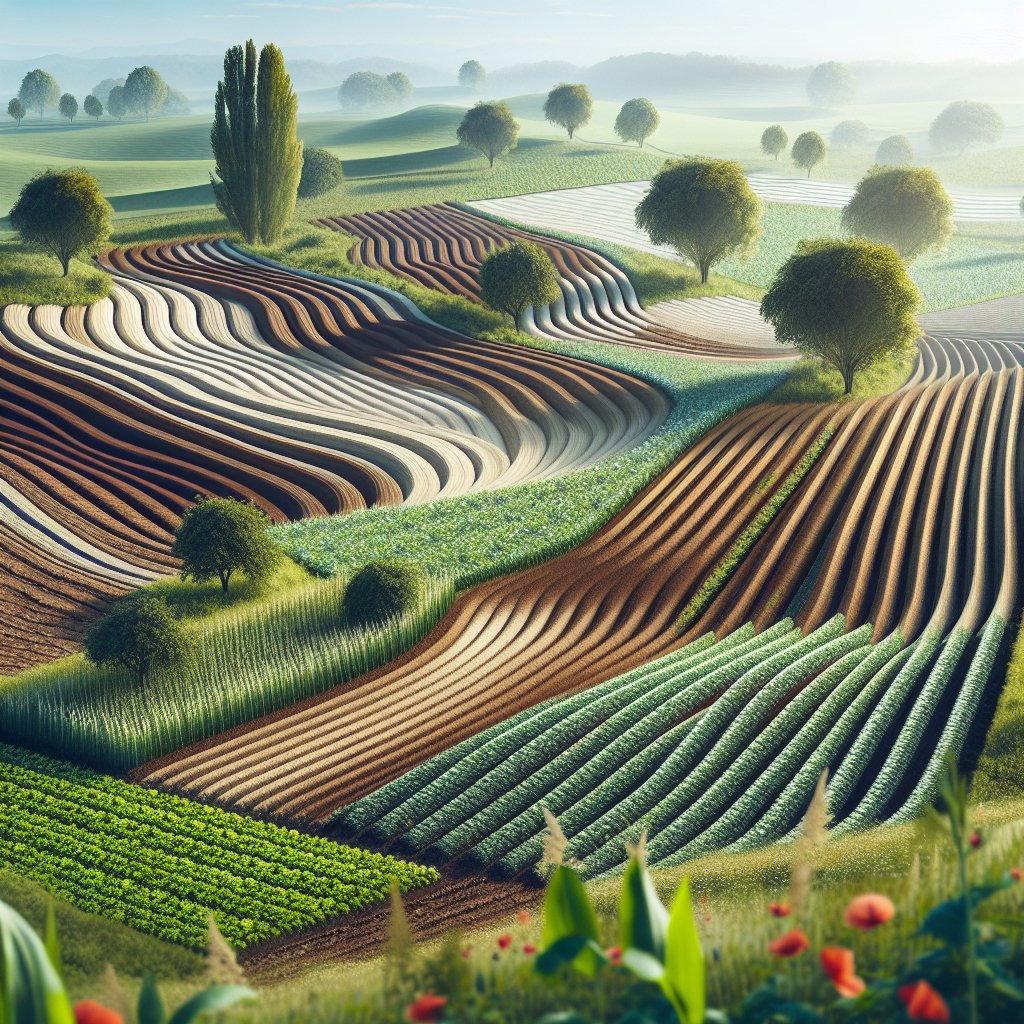
Soil erosion is a significant challenge in agriculture, leading to the loss of fertile topsoil and reduced agricultural productivity. This article explores effective strategies for preventing soil erosion on agricultural land, ensuring sustainable farming practices and long-term soil health.
Understanding Soil Erosion
Soil erosion is the process by which the upper layer of soil is removed, often due to wind, water, or human activity. It is a natural process, but human activities such as deforestation, overgrazing, and improper agricultural practices can accelerate it. The consequences of soil erosion are severe, including loss of soil fertility, reduced agricultural yields, and increased sedimentation in waterways, which can lead to water pollution and habitat destruction.
Causes of Soil Erosion
Several factors contribute to soil erosion, and understanding these is crucial for developing effective prevention strategies. The primary causes include:
- Water Runoff: Heavy rainfall can lead to water runoff, which carries away the topsoil. This is particularly problematic on sloped land where water can gain momentum.
- Wind: In arid and semi-arid regions, strong winds can blow away loose, dry soil, leading to erosion.
- Agricultural Practices: Certain farming techniques, such as plowing and tilling, can disturb the soil structure, making it more susceptible to erosion.
- Deforestation: Removing trees and vegetation reduces the land’s ability to hold soil in place, increasing erosion risk.
- Overgrazing: Livestock can strip vegetation cover, leaving soil exposed and vulnerable to erosion.
Strategies for Preventing Soil Erosion
Preventing soil erosion requires a combination of practices that protect the soil surface, enhance soil structure, and promote sustainable land management. Here are some effective strategies:
Conservation Tillage
Conservation tillage is a farming practice that minimizes soil disturbance, helping to maintain soil structure and reduce erosion. Techniques such as no-till or reduced-till farming leave crop residues on the soil surface, which protects the soil from wind and water erosion. This practice also improves water infiltration and enhances soil organic matter.
Cover Crops
Planting cover crops, such as clover or rye, during the off-season can significantly reduce soil erosion. These crops provide ground cover, reducing the impact of raindrops on the soil surface and preventing runoff. Additionally, cover crops improve soil health by adding organic matter and enhancing soil structure.
Contour Farming
Contour farming involves plowing and planting crops along the natural contours of the land. This practice helps slow down water runoff and encourages water infiltration, reducing soil erosion on sloped fields. Contour farming can be combined with strip cropping, where different crops are planted in alternating strips along the contour lines, further enhancing erosion control.
Terracing
Terracing is a technique used on steep slopes to create flat areas for farming. By constructing terraces, farmers can reduce the speed of water runoff and prevent soil erosion. Terraces act as barriers, capturing water and allowing it to infiltrate the soil rather than washing it away.
Windbreaks
In regions prone to wind erosion, planting windbreaks can be an effective strategy. Windbreaks are rows of trees or shrubs planted to reduce wind speed and protect soil from being blown away. They also provide additional benefits, such as habitat for wildlife and improved microclimates for crops.
Agroforestry
Agroforestry integrates trees and shrubs into agricultural landscapes, providing multiple benefits, including erosion control. The roots of trees and shrubs help stabilize the soil, while their canopy reduces the impact of raindrops on the soil surface. Agroforestry systems can also enhance biodiversity and improve soil fertility.
Implementing Sustainable Practices
To effectively prevent soil erosion, farmers must adopt sustainable land management practices that consider the specific conditions of their land. This involves assessing soil type, climate, topography, and existing vegetation to develop a tailored approach. Education and training for farmers are crucial in promoting the adoption of these practices.
Community Involvement
Community involvement plays a vital role in preventing soil erosion. By working together, farmers can share knowledge, resources, and experiences to implement effective erosion control measures. Community-based initiatives, such as watershed management programs, can address erosion at a larger scale, benefiting entire regions.
Policy and Support
Government policies and support are essential in promoting soil conservation practices. Incentives, subsidies, and technical assistance can encourage farmers to adopt erosion control measures. Additionally, regulations that protect natural vegetation and promote sustainable land use can help prevent soil erosion.
Conclusion
Preventing soil erosion is critical for maintaining soil health, ensuring agricultural productivity, and protecting the environment. By implementing a combination of conservation practices, farmers can effectively reduce soil erosion and promote sustainable agriculture. Collaboration among farmers, communities, and policymakers is essential to achieve long-term success in soil conservation efforts.

